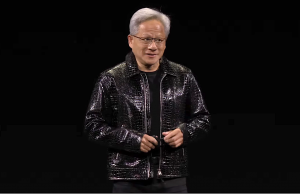Wearable tech tackles design barriers : WiFi onesies & more
This week’s WearableTech roundup features the remaining challenges for widespread adoption, a tech giant’s breakthrough discovery, and a walking hotspot.
![]()
The great barrier
.
Online publication The Drum gathered insight from fashion and technology experts as to whether they believe that there is a barrier hindering mass adoption of wearable technology. Sean Kinmont, 23red founding partner, stated that design has always been a barrier in the adoption of mainstream consumer electronics, but wearable tech brings in a whole new level of complexity as tech companies need to figure out how to make it more user-friendly and deliver more functions, aside from making the tech look good. He believes that the design and function of these devices may greatly change when telepathic brain computer interfaces arrive.
Most of the experts interviewed agreed – wearable tech should be aesthetically pleasing to interest consumers. But looks aren’t everything. User friendliness is key to mass adoption, and the backend technology needs to integrate seamlessly with users’ daily activities seamlessly.
In a white paper published last January, Endeavor Partners enumerated nine things wearable tech needs in order to keep users engaged. Read more about it here.
Samsung’s graphene breakthrough
.
Samsung Electronics announced that scientists at the Samsung Advanced Institute of Technology (SAIT), in partnership with Sungkyunkwan University, has discovered a breakthrough synthesis method that will speed up the commercial production of graphene. Graphene is a one-atom thick layer of graphite that is strong, light, nearly transparent and an excellent conductor of heat and electricity.
“This is one of the most significant breakthroughs in graphene research in history,” said the laboratory leaders at SAIT’s Lab. “We expect this discovery to accelerate the commercialization of graphene, which could unlock the next era of consumer electronic technology.”
Because of graphene’s properties, it can revolutionize the tech industry. Graphene’s electron mobility is 100 times greater than silicon, which is the widely used material in semiconductors today. It is more durable than steel, has a high heat conductibility, and is greatly flexible, making it the perfect material for wearable devices or other gadgets or devices that needs flexible display.
BB.Suit
.
Dutch designer Borre Akkersdijk, and his company ByBorre, collaborated with Eindhoven University of Technology (TU/e), 22Tracks, CRISP and Daan Spangenberg Graphics, to create the BB.Suit.
The BB.Suit is a onesie that provides WiFi connectivity, so if you’re wearing one, you can be considered as a walking hotspot. Though not many people will be fond of wearing a onesie in public, it just shows how technology can be integrated in clothing.
Though the main purpose of the BB.Suit is to provide WiFi connectivity on the go, the onesie is quite adaptable as the company showed at SXSW wherein the BB.Suit also provided a way to share music. The suit can be embedded with Bluetooth, NFC, and GPS chips so you can share media, or be tracked by others who wants to connect to your WiFi.
A message from John Furrier, co-founder of SiliconANGLE:
Your vote of support is important to us and it helps us keep the content FREE.
One click below supports our mission to provide free, deep, and relevant content.
Join our community on YouTube
Join the community that includes more than 15,000 #CubeAlumni experts, including Amazon.com CEO Andy Jassy, Dell Technologies founder and CEO Michael Dell, Intel CEO Pat Gelsinger, and many more luminaries and experts.
THANK YOU













